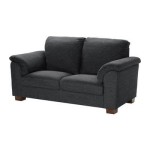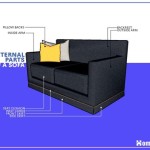Essential Aspects of Recycling Your Old Sofa
Recycling an old sofa involves various considerations to ensure proper disposal and the recovery of valuable materials. Understanding the essential aspects of this process allows individuals to make informed decisions, minimize environmental impact, and contribute to a sustainable waste management system.
1. Preparation for Recycling
Before commencing the recycling process, proper preparation is crucial. This includes removing any non-recyclable components, such as cushions, pillows, and metal springs. Separating these materials allows for efficient recycling and reduces contamination.
2. Identifying Recyclable Materials
Sofas are typically composed of a combination of materials, some of which are recyclable while others are not. Recyclable materials commonly found in sofas include metal, wood, and fabric. It is essential to identify these materials to ensure they are properly recycled.
3. Locating Recycling Facilities
Finding appropriate recycling facilities is essential for responsible disposal. Researching local recycling centers or contacting your municipality can provide information on facilities that accept old sofas. Some facilities may offer doorstep collection services, making the process more convenient.
4. Transportation Considerations
Depending on the size and weight of the sofa, transportation to the recycling facility may require specific arrangements. If the sofa is too large for personal transport, consider renting a truck or utilizing pickup services provided by recycling centers.
5. Environmental Benefits
Recycling old sofas offers numerous environmental benefits. By diverting them from landfills, it reduces methane emissions and conserves natural resources. Recycling metal, wood, and fabric can decrease the demand for raw materials, minimizing the environmental impact of extraction and processing.
6. Monetary Value
In some cases, recycling old sofas can provide monetary value. Certain recycling facilities may offer compensation for materials that have resale value. While the amount may vary, it can help offset the cost of transportation or disposal fees.
7. Landfill Diversion
Landfills are a significant source of environmental pollution. Recycling old sofas helps reduce the volume of waste sent to landfills, thereby extending their lifespan and minimizing the negative impact on the environment.
Conclusion
Recycling an old sofa is a multifaceted process that requires careful consideration of various essential aspects. By understanding the preparation, identification, location, transportation, benefits, value, and landfill diversion involved, individuals can effectively recycle their old sofas and contribute to a sustainable waste management system.
How To Dispose Of Your Old Sofa Fella Design

Lose It How To Reuse Recycle Or Replace Your Sofa
Diy Ways To Recycle A Redundant Couch Junk Frog

How To Dispose Of Your Old Sofa Fella Design

13 Modern Ways To Recycle Your Old Furniture Conserve Energy Future

5 Best Ways To Dispose Of Your Sofa

How To Get Rid Of Used Furniture Recycle Coach

Couch Removal Think Twice Before Tossing Old Furniture

7 Ways To Repurpose Upholstery Fabric From Old Couches One Green Planet

How To Dispose Of An Old Sofa Ethical Shift
Related Posts








